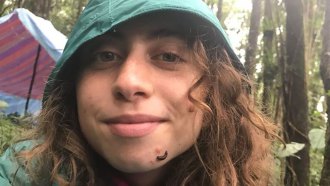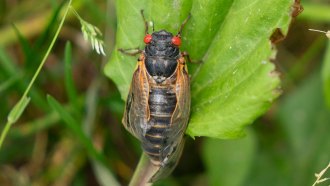
Life sciences writer Susan Milius has been writing about botany, zoology and ecology for Science News since the last millennium. She worked at diverse publications before breaking into science writing and editing. After stints on the staffs of The Scientist, Science, International Wildlife and United Press International, she joined Science News. Three of Susan's articles have been selected to appear in editions of The Best American Science Writing.

Trustworthy journalism comes at a price.
Scientists and journalists share a core belief in questioning, observing and verifying to reach the truth. Science News reports on crucial research and discovery across science disciplines. We need your financial support to make it happen – every contribution makes a difference.
All Stories by Susan Milius
-
 Animals
AnimalsScience has finally cracked male riflebirds’ flirty secrets
New video upsets the old notion that these birds of paradise use wing clapping to make percussive sounds while courting.
-
 Animals
AnimalsTo tell a right-trunked elephant from a lefty, check the wrinkles
Elephant trunks, more sci-fi face-tentacle than ho-hum mammal nose, are getting new scrutiny as researchers explore how the wrinkles grow.
-
 Animals
AnimalsCoyotes have the face muscles for that ‘sad-puppy’ look
The ability to make heart-melting stares may not be the fruit of dog domestication if their still-wild cousins have the power to do it too.
-
 Animals
AnimalsCan leeches leap? New video may help answer that debate
For some, it’s the stuff of nightmares. But a grad student’s serendipitous cell phone video might resolve a long-running debate over leech acrobatics.
-
 Life
LifeIt’s a big year for cicadas. Here’s what to know about this year’s emergence
Periodical cicadas are an odd marvel of nature. This year, the biggest brood of all is coming out in the U.S. South while another emerges in the Midwest.
-
 Animals
AnimalsWant to see butterflies in your backyard? Try doing less yardwork
Growing out patches of grass can lure adult butterflies and moths with nectar and offer lawn mower–free havens for toddler caterpillars.
-
 Plants
PlantsPlant ‘time bombs’ highlight how sneaky invasive species can be
Sycamore maples and some other plant invaders lurked for centuries before starting to choke out native ecosystems and species.
-
 Animals
AnimalsBig monarch caterpillars don’t avoid toxic milkweed goo. They binge on it
Instead of nipping milkweed to drain the plants’ defensive sap, older monarch caterpillars may seek the toxic sap. Lab larvae guzzled it from a pipette.
-
 Life
LifeThese snails give live birth, and it’s the babies that may do the labor
Protecting eggs in mom’s body may have given rough periwinkle snails an advantage over egg-laying cousins, letting them spread to far more coastline.
-
 Animals
AnimalsAnt face patterns like swirls and stubble might have practical value
Reviewing thousands of ant photos hints that facial surface patterns might offer benefits, like structural support or abrasion protection.
-
 Life
LifeFaking death lets some female frogs slip the mating grip of a male
Suddenly looking dead, grunting like a guy or vigorously rotating can help female frogs survive mating balls in species with aggressively grabby males.
-
 Microbes
MicrobesWatch: Recent microbial discoveries are changing our view of life on Earth
Videos capture the strange movements and predatory styles of protists — among the closest microbial cousins to multicellular life.